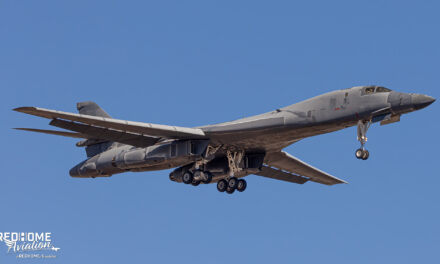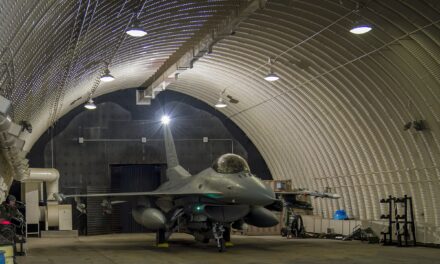B-1B “Lancelot”
A decommissioned B-1B Lancer aircraft was pulled from the 309th Aerospace Maintenance and Regeneration Group (AMARG) at Davis-Monthan Air Force Base in Arizona to rejoin the Air Force’s Strategic Bomber Fleet and recently arrived at Tinker AFB to begin the regeneration process.
As told by 2nd Lt. Kaseyann Cornwall, 72nd Air Base Wing Public Affairs, in the article B-1B Lancer “Lancelot” Set to Rejoin Fleet, the decision of the Strategic Plans and Programs office at Headquarters Air Force to regenerate the aircraft, nicknamed “Lancelot,” supports the Air Force Materiel Command’s mission to deliver war-winning capabilities.
The need to pull “Lancelot” from retirement arose when another aircraft experienced a catastrophic fire engine failure during routine maintenance at Dyess AFB, Texas, in 2022.
After this accident, the B-1 System Program Office at Tinker proposed multiple courses of action to return the B-1B fleet to its congressionally mandated size and maintain its operational readiness.
With projected repair costs to fix the fire-damaged aircraft expected to be cost-prohibitive, Air Force officials elected to regenerate “Lancelot.”

The team from the B-1 System Program Office worked with their engineers and logistics colleagues to build a statement of work that provided the requirements to prepare the aircraft which spent two years and eleven months at the 309th AMARG. This ensured that the program office provided the right requirements to ensure a safe and reliable flight.
B-1B “Lancelot” regeneration project
A team comprised of members from the 309th AMARG; Dyess’ 7th Bomb Wing; Tinker’s 76th Expeditionary Depot Maintenance Flight and 569th Egress Flight; along with the SPO restored “Lancelot” to flying condition, allowing the aircraft to be ferried to Tinker AFB, where it will undergo programmed depot maintenance at the Oklahoma City Air Logistics Complex prior to rejoining the Strategic Bomber Fleet. The aircraft will also receive upgrades missed during its retirement so that its capabilities match other aircraft in the fleet.
Jason Justice, a technical analyst contractor at the Air Force Life Cycle Management Center with more than 30 years of experience supporting the B-1, assisted with the regeneration project. He helped to build the proper work requirements and compile the equipment and personnel needed to complete the regeneration task from the 309th AMARG. His team coordinated with the 10th Flight Test Squadron aircrew at Tinker, providing up-to-date status and maintenance support to ensure current software requirements were met for the crew to fly the aircraft.

After Tinker’s OC-ALC Artisans complete their work, the aircraft will undergo a functional check flight by the 10th FLTS before being delivered back to Dyess AFB for operational sorties.
Proving the reliability of the Lancer
Lt. Col. Michael Griffin, 10th Flight Test Squadron director of operations and a crew from 10th FLTS flew the aircraft from Davis-Monthan to Tinker. Griffin highlighted the importance of the regeneration effort in maintaining the B-1B fleet’s operational readiness.
“Pulling ‘Lancelot’ out of the 309th AMARG and putting it through program depot-level maintenance at Tinker will restore the aircraft to the operational units, allowing them to continue to support the nation’s call for power projection,” said Griffin.
“I feel this project is important in continuing to prove the reliability of the B-1 and its use for airpower and air superiority,” said Justice.

Regenerated bombers
As already reported, the US Air Force (USAF) retired 17 B-1s between February and September 2021. Service officials said at the time that restoring them to “status quo” would cost tens of millions of dollars per aircraft, while retiring them would allow maintainers to focus their time and resources toward keeping the remaining aircraft mission capable.
Air Force Global Strike Command noted at the time that four of the 17 bombers would be maintained “in a reclaimable condition.”
The last bomber to return to active service after a stretch in the desert boneyard was a B-52 that returned to keep the fleet at the congressionally mandated size of 76 airframes. The USAF retired 33 B-1s in 2003, only to later bring seven back by September 2004 after receiving a mandate from Congress.
According to Air & Space Forces Magazine, the B-1 fleet is projected to remain in the active inventory into the 2030s, when the new B-21 Raider comes on board. The Air Force has been upgrading its remaining B-1s with new technology as part of what it calls the B-1 Embracing Agile Scheduling Team (BEAST) program.

Photo credit: Paul Shirk and Clayton Cummins / U.S. Air Force




